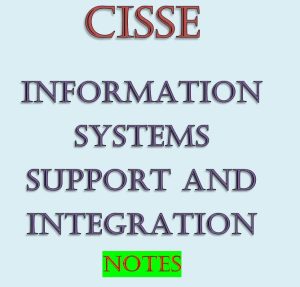Original price was: KSh1,200.KSh899Current price is: KSh899.
Summarised Networking and Data Communication Pdf notes
Topic 1: Data Communication and Networks Overview
Topic 2: Network Devices
Topic 3: Transmission Media
Topic 4: Network Layered Models
Topic 5: Network Topologies
Topic 6: IP Addresses
Topic 7: Transport and Internet Layer
Topic 8: Network Protocols
Topic 9: Routing and Switching Technology
Topic 10: WLAN (Wireless LAN)
Topic 11: WAN Overview
Topic 12: Network Management and Monitoring
Topic 13: Network Troubleshooting
Topic 14: and Implement a Local Area Network (LAN)
Description
NETWORKING AND DATA COMMUNICATION
UNIT DESCRIPTION
This paper is intended to equip the candidate with the knowledge, skills and attitude that will enable him/her to design, configure and administer networks.
LEARNING OUTCOMES
A candidate who passes this paper should be able to:
• and configure a Computer Network
• Select appropriate Components and infrastructure for Network design
• Administer IPV4 and IPV6 addresses
• Configure IPV4 and IPV6 addresses and perform Subnetting
• Troubleshoot Networks for Service Delivery
• Use an emulation and/or simulation software to design and configure networks
CONTENT
1. Data Communication and Networks Overview
1.1 Need for Data Communications and Networks
1.2 Network Services
1.3 Network types
1.4 Domain and Workgroup concepts
1.5 Data Transmission modes
1.6 Digital and Analog Transmission
1.7 Wireless Transmission
2. Network Devices
2.1 Network Adapters
2.2 Intermediary Devices
2.3 End Devices
2.4 Peer-to-peer
3. Transmission Media
3.1 Guided Transmission Overview
3.2 Wireless Transmission
3.3 Cable Termination
4. Network Layered Models
4.1 Open Systems Interconnect (OSI) and Transmission Control Protocol with Internet
4.2 Protocols (TCP / IP) Models Comparison
4.3 Benefits of Layered Model
4.4 TCP/IP Protocol Suite
4.5 TCP/IP Communication Process
4.6 Standards Organizations
4.7 Internet Standards
5. Network Topologies
5.1 Physical Topologies
5.2 Logical Topologies
5.3 Optical Network Topologies (PONs)
6. IP Addresses
6.1 IPV4 Address classes
6.2 Classless Inter-domain Routing (CIDR)
6.3 Subnetting IPV4 Addresses
6.4 IPV6 Address types
6.5 Subnetting IPV6
6.6 IPV4 and IPV6 Configuration
7. Transport and Internet Layer
7.1 Transmission Control Protocol (TCP) and User Datagram Protocols (UDP)
7.2 Overview
7.3 Port Number groups
7.4 Netstat Command utility
7.5 Routing protocols
7.6 Static routing configuration
8. Network Protocols
8.1 DHCP (Dynamic Host Control Protocol)
8.2 DNS (Domain Naming Services)
8.3 SSH (Secure Shell)
8.4 TELNET
8.5 FTP (File Transfer Protocol)
9. Routing and Switching Technology
9.1 Collision and Broadcast Domains
9.2 VLAN Networks
9.3 Router vs Multilayer Switch
9.4 Inter-VLAN Routing Configuration
10. WLAN (Wireless LAN)
10.1 WLAN Components
10.2 WLAN Threats
10.3 Shared key Authentication Methods
10.4 Graphical User Interface Configuration of a Wireless Router
11. WAN Overview
11.1 WAN Standards
11.2 Public and Private WANs
11.3 Ethernet WANs
11.4 WAN Technologies
12. Network Management and Monitoring
12.1 Syslog Usage and Facilities.
12.2 NTP (Network Time Protocol) Operation modes.
12.3 Protocol Analysers
12.4 Configure and Verify NTP using Layer 3 device.
12.5 Configure syslog timestamp using Layer 3 device.
13. Network Troubleshooting
13.1 Network Documentation
13.2 Troubleshooting Process
13.3 Software and Hardware troubleshooting tools.
13.4 Troubleshooting Internet Protocol (IP) Connectivity
14. and Implement a Local Area Network (LAN)
14.1 Identify cables to use in a network.
14.2 Cable a physical/Simulated/Emulated topology to Create an Internetwork
14.3 Enter Static IP Address on the LAN
14.4 Configure Static Routing protocol
14.5 Verify End devices are able to communicate using appropriate utilities
14.6 Configure the Router and Switch to be accessed remotely using Telnet and SSH application layer protocols
14.7 Configure the Router to act as a DHCP server and verify connectivity on the End Devices.




